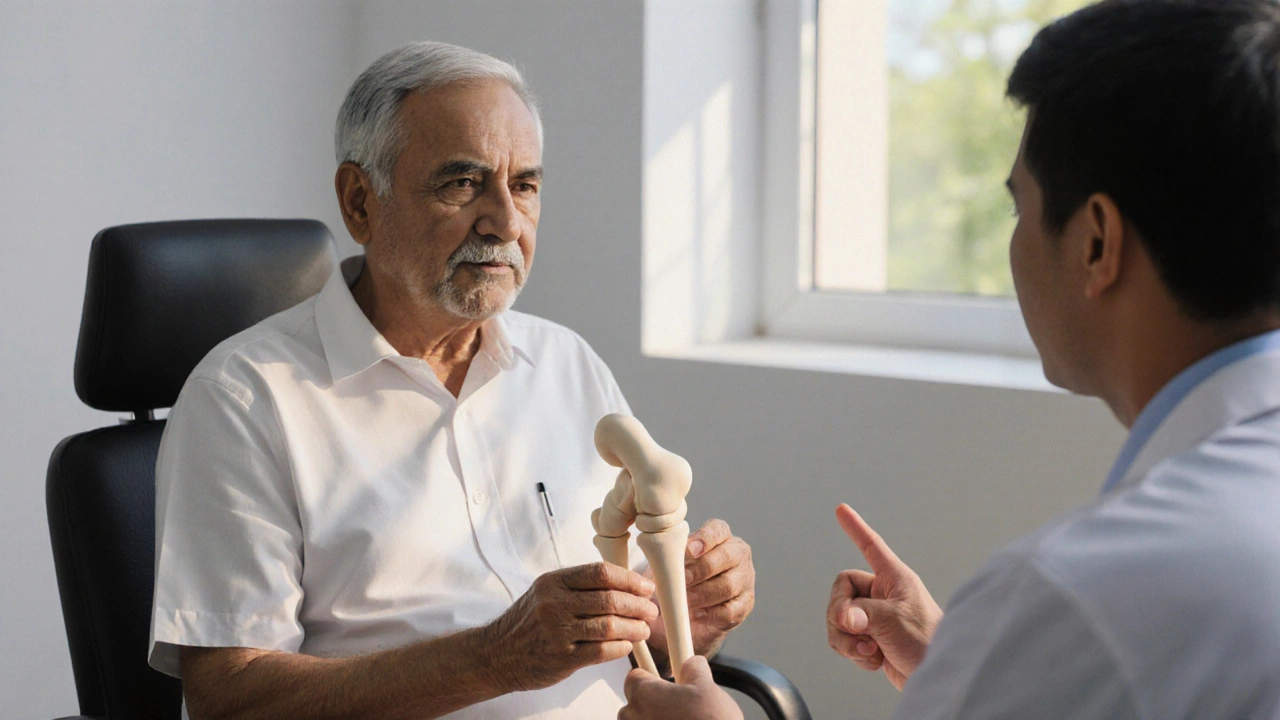Revision Knee Surgery: What It Is and When It Matters
When dealing with revision knee surgery, a surgical procedure that removes or repairs a previously implanted knee prosthesis that has failed, become loose, or caused pain. Also known as knee revision, it is usually considered after an initial knee replacement a joint arthroplasty that replaces damaged cartilage with a metal‑plastic implant starts showing problems. The most common triggers are severe osteoarthritis the wear‑and‑tear disease that erodes joint cartilage and often leads to the first knee replacement, implant loosening, infection, or mechanical wear of the prosthetic implant the artificial components—metal femoral component, tibial plateau, and polyethylene spacer—used in knee arthroplasty. In short, revision knee surgery addresses the shortcomings of a primary knee replacement and aims to restore function, relieve pain, and extend the life of the joint.
Key Factors That Drive the Decision for a Revision
First, surgeons assess the condition of the existing implant. Imaging tests such as X‑ray, CT, or MRI can reveal loosening, wear, or malalignment. If the prosthetic components are out of place, the patient may feel a grinding sensation or instability when walking. Second, the presence of infection is a red flag; even a low‑grade bacterial infection can deteriorate bone around the implant and force a revision. Third, the patient's overall health matters—a robust cardiovascular system and good bone quality improve the odds of a successful revision. Finally, the expected functional gain must outweigh the risks. Revision procedures are technically more demanding than primary replacements, often lasting longer and requiring more bone grafting or custom implants. Therefore, a thorough discussion of the benefits, risks, and realistic outcomes is essential before moving forward.
Post‑operative rehabilitation plays a pivotal role in turning a complex surgery into a functional knee. Early physiotherapy focuses on reducing swelling, restoring range of motion, and strengthening surrounding muscles. As healing progresses, weight‑bearing exercises and gait training help the new implant bear load safely. Studies show that patients who commit to a structured rehab plan recover quicker and achieve higher satisfaction scores. Moreover, modern rehab protocols incorporate pain‑free movement techniques, balance drills, and proprioceptive training to prevent future injuries. If you’re weighing a revision, ask your surgeon about the specific rehab regimen they recommend and how it fits your daily routine.
Our collection below dives deeper into each of these topics. You’ll find practical guides on recognizing implant failure, choosing the right surgeon, navigating insurance coverage, and setting realistic expectations for life after a revision. Whether you’re a patient facing the prospect of a second operation or a caregiver seeking clear answers, the articles ahead give you the facts and tools you need to make an informed choice.
Understanding the Regret Rate for Knee Replacement Surgery
Discover what the regret rate for knee replacement surgery really means, see real-world percentages, learn why patients feel regret, and get practical steps to keep your own risk low.
